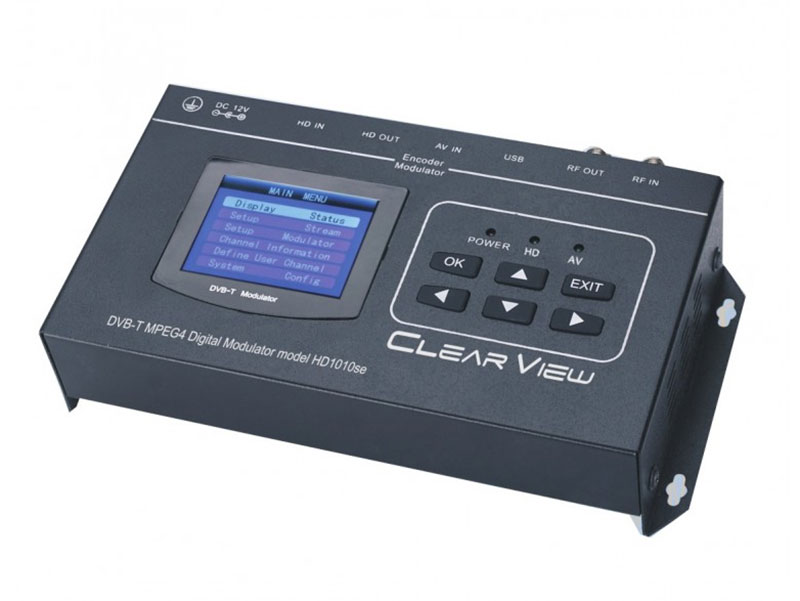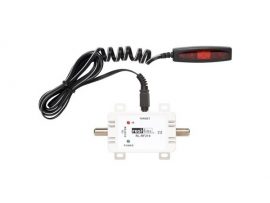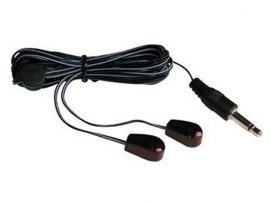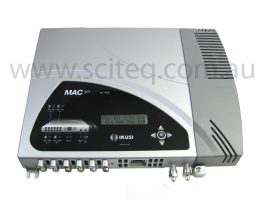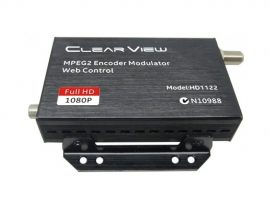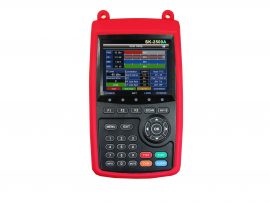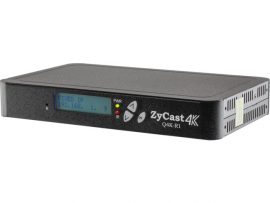Description
ClearView HD1010se MPEG4 Single AV/HDMI DVBT Modulator with HDMI Loop Out
The Clearview HD1010se is a single channel low cost digital modulator with HDMI or CVBS inputs, plus a HDMI Loop output. This modulator will give a DVBT MPEG4 RF Output
Specifications
HDMI Encoding Section
Encoding: MPEG-4 AVC/H.264
Video Resolution: 1920 x 1080p@60, 1920 x 1080p@50, 1920 x 1080i@60,
1920 x 1080i@50, 1280 x 720p@60, 1280 x 720p@50
Aspect ratio: 16:9, 4:3
Bit rate: 1.000-18.000 Mbps, Auto.
Audio Encoding: MPEG1 Layer II
Sample rate: 48KHz
Bit rate: 64, 96, 128, 192, 256, 320kbps
CVBS Encoding Section
Input: PAL, NTSC
DVB-T Modulator Section
Standard: DVB-T COFDM
Bandwidth: 6M, 7M, 8M
Constellation: QPSK, 16QAM, 64QAM
Code rate: 1/2, 2/3, 3/4, 5/6, 7/8
Guard interval: 1/32, 1/16, 1/8, 1/4
Transmission mode: 2K, SK
MER: >31dB
RF frequency: 50-950 MHz
RF output level: 0- +6dBm
System
Upgrade: USB
Power supply: DC 12V
Operation temperature: 0- to 45 deg C
For a HDMI MPEG2 Output Modulator please see the Clearview HD1112+
What’s the difference between MPEG2 and MPEG4?
DVB-T (Digital Video Broadcasting – Terrestrial) is a standard for transmitting digital television signals over terrestrial (over-the-air) broadcast networks. MPEG-2 and MPEG-4 are video compression standards used in DVB-T to encode the video content.
- DVB-T MPEG-2: DVB-T MPEG-2 refers to the use of the MPEG-2 video compression standard within the DVB-T system. MPEG-2 is an older compression standard that was widely used for digital television broadcasting before the introduction of MPEG-4. It offers moderate compression efficiency, which means it requires more bandwidth to transmit video compared to MPEG-4 for the same quality. MPEG-2 provides good video quality, especially for standard definition (SD) content, and it is still compatible with many older television sets and receivers.
- DVB-T MPEG-4: DVB-T MPEG-4, on the other hand, uses the more advanced MPEG-4 video compression standard. MPEG-4 offers better compression efficiency, allowing broadcasters to transmit higher quality video using less bandwidth compared to MPEG-2. This is especially beneficial for high-definition (HD) and other bandwidth-intensive content. MPEG-4 can deliver superior video quality with the same amount of data or equivalent video quality with less data compared to MPEG-2. However, MPEG-4 requires more processing power for encoding and decoding, which means older television sets or receivers may not support MPEG-4 without a compatible decoder.
In summary, the main difference between DVB-T MPEG-2 and DVB-T MPEG-4 lies in the video compression standard used. MPEG-2 is an older standard with moderate compression efficiency but good compatibility with older devices, while MPEG-4 is a more advanced standard offering better compression efficiency for higher quality video but requiring more processing power and compatibility considerations.
How can I tell if my TV is MPEG2 or MPEG4?
Early digital TVs sold in Australia had MPEG2 DVB-T Tuners. Later models have progressed to MPEG4. Any MPEG4 TV will work with MPEG2 signals. However MPEG2 TVs will not work with MPEG4 signals including those from MPEG4 modulators.
It is often difficult to see from the TV’s specifications if the hardware is MPEG2 or MPEG4. The easiest way is to test the TV with a normal broadcast antenna signal. New HD Channels such as Channel 70 (7HD) or Channel 31 (SBS Viceland HD) are broadcast in MPEG4. If your TV produces a black picture or an error message such as FORMAT NOT SUPPORTED, then this TV is MPEG2 only.
To correct a MPEG2 only TV, a new DVBT Set Top Box can be used to tune the RF signal and convert it to a HDMI input on the TV.

